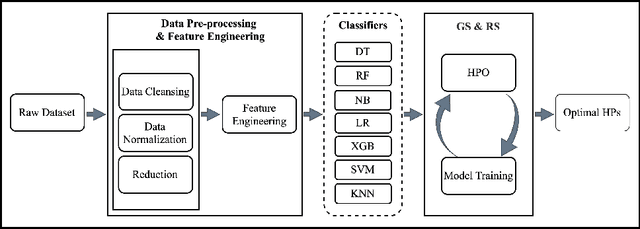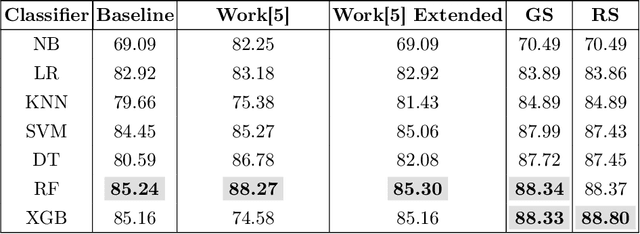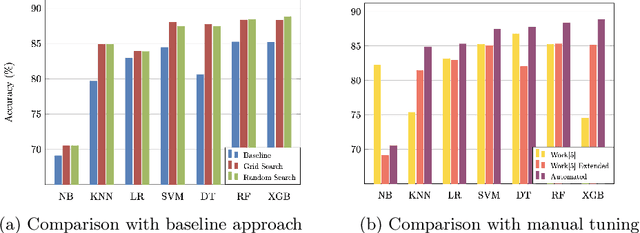Leila Zahedi
OptABC: an Optimal Hyperparameter Tuning Approach for Machine Learning Algorithms
Dec 15, 2021



Abstract:Hyperparameter tuning in machine learning algorithms is a computationally challenging task due to the large-scale nature of the problem. In order to develop an efficient strategy for hyper-parameter tuning, one promising solution is to use swarm intelligence algorithms. Artificial Bee Colony (ABC) optimization lends itself as a promising and efficient optimization algorithm for this purpose. However, in some cases, ABC can suffer from a slow convergence rate or execution time due to the poor initial population of solutions and expensive objective functions. To address these concerns, a novel algorithm, OptABC, is proposed to help ABC algorithm in faster convergence toward a near-optimum solution. OptABC integrates artificial bee colony algorithm, K-Means clustering, greedy algorithm, and opposition-based learning strategy for tuning the hyper-parameters of different machine learning models. OptABC employs these techniques in an attempt to diversify the initial population, and hence enhance the convergence ability without significantly decreasing the accuracy. In order to validate the performance of the proposed method, we compare the results with previous state-of-the-art approaches. Experimental results demonstrate the effectiveness of the OptABC compared to existing approaches in the literature.
HyP-ABC: A Novel Automated Hyper-Parameter Tuning Algorithm Using Evolutionary Optimization
Sep 11, 2021



Abstract:Machine learning techniques lend themselves as promising decision-making and analytic tools in a wide range of applications. Different ML algorithms have various hyper-parameters. In order to tailor an ML model towards a specific application, a large number of hyper-parameters should be tuned. Tuning the hyper-parameters directly affects the performance (accuracy and run-time). However, for large-scale search spaces, efficiently exploring the ample number of combinations of hyper-parameters is computationally challenging. Existing automated hyper-parameter tuning techniques suffer from high time complexity. In this paper, we propose HyP-ABC, an automatic innovative hybrid hyper-parameter optimization algorithm using the modified artificial bee colony approach, to measure the classification accuracy of three ML algorithms, namely random forest, extreme gradient boosting, and support vector machine. Compared to the state-of-the-art techniques, HyP-ABC is more efficient and has a limited number of parameters to be tuned, making it worthwhile for real-world hyper-parameter optimization problems. We further compare our proposed HyP-ABC algorithm with state-of-the-art techniques. In order to ensure the robustness of the proposed method, the algorithm takes a wide range of feasible hyper-parameter values, and is tested using a real-world educational dataset.
Search Algorithms for Automated Hyper-Parameter Tuning
Apr 29, 2021


Abstract:Machine learning is a powerful method for modeling in different fields such as education. Its capability to accurately predict students' success makes it an ideal tool for decision-making tasks related to higher education. The accuracy of machine learning models depends on selecting the proper hyper-parameters. However, it is not an easy task because it requires time and expertise to tune the hyper-parameters to fit the machine learning model. In this paper, we examine the effectiveness of automated hyper-parameter tuning techniques to the realm of students' success. Therefore, we develop two automated Hyper-Parameter Optimization methods, namely grid search and random search, to assess and improve a previous study's performance. The experiment results show that applying random search and grid search on machine learning algorithms improves accuracy. We empirically show automated methods' superiority on real-world educational data (MIDFIELD) for tuning HPs of conventional machine learning classifiers. This work emphasizes the effectiveness of automated hyper-parameter optimization while applying machine learning in the education field to aid faculties, directors', or non-expert users' decisions to improve students' success.
 Add to Chrome
Add to Chrome Add to Firefox
Add to Firefox Add to Edge
Add to Edge